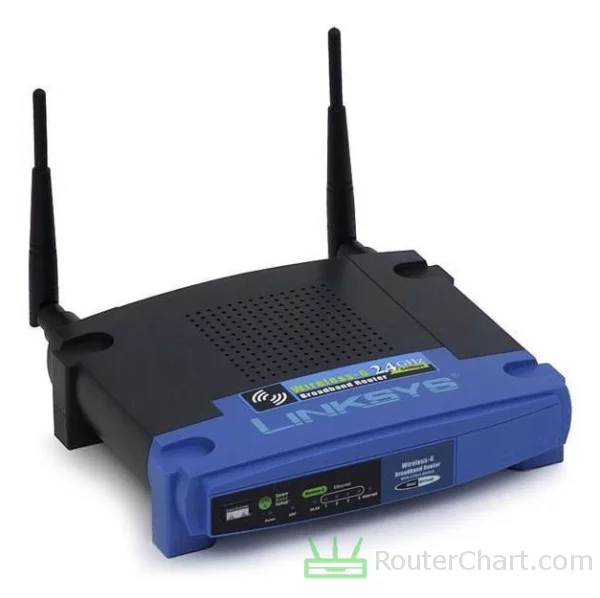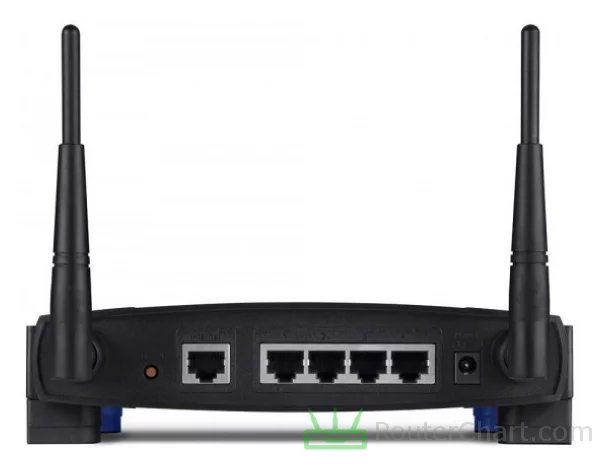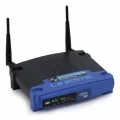Linksys WRT54GL v1 router review
Linksys introduced the WRT54GL v1 router in 2005. It is powered by Broadcom BCM5352 @ 200 MHz chipset, 16 MB of RAM, and 4 MB of flash memory.
Want to know if this Linksys router stands out? Stay with us!
Table of Contents
- Linksys WRT54GL v1 specifications
- Body, dimensions, weight
- System, chipset, RAM, flash, power supply
- Network, protocols, WAN and LAN ports
- Wireless, antennas, speed, security
- Connectivity
- Administration, user interface, login information
- Links
- Verdict, Pros and Cons
- Photos
- Comparisons
Our personal experiences and opinions form the basis of this article. We aimed to share insights on a topic, and we hoped others would find it useful and inspirational. If you noticed any mistakes or missing details about the Linksys WRT54GL v1, please let us know.

The WRT54GL v1 has a user-friendly interface, it's suitable for users with varying levels of experience. Linksys has a history of introducing innovative features and technologies into its products.
Linksys WRT54GL v1 specifications
| Brand | Linksys |
|---|---|
| Name | WRT54GL v1 |
| Type | WRT54GLV1 |
| Rating | |
| Launch | 2005 |
Body
| Dimensions | 186 x 48 x 154 mm |
|---|---|
| Weight | 391 g |
If you plan to move a lot and need to take your router with you, the size is important. Otherwise, the size isn't too crucial. If you plan to mount your router on a wall or ceiling, the weight can affect the mounting process.
System
| Chipset | Broadcom BCM5352 @ 200 MHz |
|---|---|
| RAM | 16 MB |
| Flash | 4 MB |
| OS | Linksys Linux based open-source |
| Alternative OS | OpenWRT DD-WRT Tomato |
| Power supply | 12 V / 1 A |
The Broadcom BCM5352 @ 200 MHz CPU provides processing power. The 16 MB of RAM helps the router manage many tasks concurrently OpenWrt offers many customization options. They let users change and tailor their router's functions to their needs.

Network
| Protocols | IPv4 |
|---|---|
| LAN ports | 4 x 10/100 Mbps |
| WAN ports | 1 x 10/100 Mbps |
| Mobile network | no |
| VPN support | no |
The WRT54GL v1 features a Fast Ethernet WAN port that has a maximum speed of 100 Mbps.
Wireless
| Antennas | 2 x 2 dBi RP-SMA |
|---|---|
| 2.4 GHz | yes |
| 5 GHz | no |
| 60 GHz | no |
| Standards | IEEE 802.11b/g |
| Class | G54 |
| Speed | 54 Mbps |
| Transmit power | 18 dBm |
| Security | WEP WPA2 |
| Guest network | no |
The WRT54GL v1 is compatible with 2.4 GHz Wi-Fi networks. 802.11g routers have a 54 Mbps max data rate. This is much slower than newer Wi-Fi standards. The introduction of WPA2 (Wi-Fi Protected Access 2) improved upon WEP. It provides stronger security.

Connectivity
| USB ports | no |
|---|---|
| Print server | no |
| File server | no |
The WRT54GL v1 router doesn't have file-server or print-server functionality.
Administration
| Default IP | 192.168.1.1 |
|---|---|
| Default username | [blank] |
| Default password | admin |
Changing the password often is a good security practice. It protects your network and devices from unauthorized access. Changing the default password improves your router's security. It reduces the risk of unauthorized individuals controlling your network.
Links
| Official site | https://www.linksys.com/ |
|---|
Pros and Cons
Every router, including this Linksys one, has its good sides and not-so-good sides. Let's take a closer look at both to get a full understanding of what this router can do. Just remember, this is just what I think, and you might see things differently.
Pros
- lightweight
- OpenWrt compatible
Cons
- insufficient memory
- insufficient flash
- lack of Gigabit LAN
- Non-gigabit WAN port
- missing Wi-Fi 6 support
- lacks Wi-Fi 5 compatibility
- reduced Wi-Fi bandwidth
- incompatible with WPA3
- missing WPS support
- no USB connectivity
Linksys WRT54GL v1 photos




Linksys WRT54GL v1 comparisons
We've noticed that many of our visitors like to compare the Linksys WRT54GL v1 router with these popular models.
If there’s information about the Linksys WRT54GL v1 that you would like to see on this site, then write to us.
Updated: May 25, 2024




